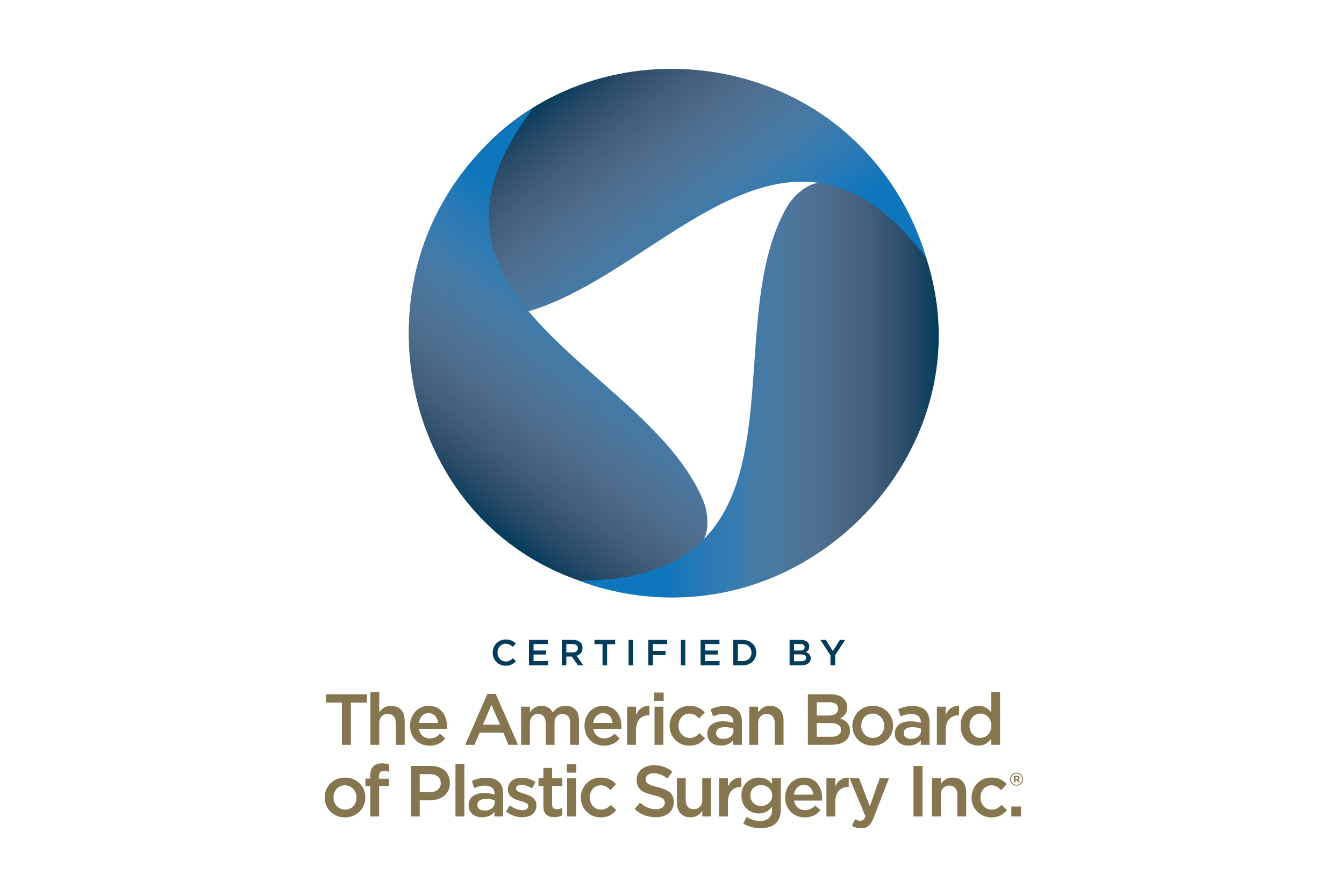If there were an overriding theme of Dr. Swanson’s practice it would be to question the prevailing wisdom, and subject our methods and habits to scientific scrutiny. His contributions to plastic surgery may be considered in three main categories: body, breast, and face. Subheadings would include BIA-ALCL, patient safety, prevention of blood clots, improved anesthesia, improved cosmetic breast surgery, better tummy tucks, more limited facelift scars, and an awareness of the problem of conflict of interest.
In 1998, Dr. Eric Swanson opened Kansas City’s first licensed ambulatory surgery center specializing in cosmetic surgery. In 2002, Dr. Swanson embarked on a rigorous clinical investigation of cosmetic surgery, including patient outcome studies, clinical studies, and measurements using computer-assisted imaging and MRIs. Dr. Swanson undertook an intensive investigation of liposuction and abdominoplasty, including sophisticated laboratory tests, to investigate the health effects and safety of these highly popular procedures. His work using laser fluorescence imaging challenges the limited lipoabdominoplasty technique in favor of a full tummy tuck and superior cosmetic result. This study was selected as Editor’s Pick and the Cover Article for the July 2015 issue of the Journal of Plastic and Reconstructive Surgery.
-
- Swanson E. Comparison of limited and full dissection abdominoplasty using laser fluorescence imaging to evaluate perfusion of the abdominal skin. Plast Reconstr Surg. 2015;136:31e–43e.
Starting in 2013, Dr. Swanson pioneered the use of ultrasound as a screening tool for the detection of deep venous thrombosis, providing original information on the frequency of this complication in plastic surgery outpatients and “SAFE” methods to reduce risk. Concerned about its effectiveness and potential for harmful side effects, Dr. Swanson has spoken against the use of routine anticoagulation for plastic surgery outpatients. Dr. Swanson’s landmark prospective study of 1000 patients treated using ultrasound surveillance was published in the January 2020 issue of the Journal of Plastic and Reconstructive Surgery. A randomized laboratory study of sequential compression devices was published the following month.
-
- Swanson E. Prospective study of Doppler ultrasound surveillance for deep venous thromboses in 1000 plastic surgery outpatients. Plast Reconstr Surg. 2020;145:85–96.
- Swanson E. The effect of sequential compression devices on fibrinolysis in plastic surgery outpatients: A randomized trial. Plast Reconstr Surg. 2020;145:392–401.
Dr. Swanson was among the first plastic surgeons to call for a ban on textured breast implants. He appeared on NBC National News with Lester Holt in November, 2018. His widely-read article, titled “The Textured Breast Implant Crisis, A Call for Action” was published in June, 2019. On July 24, 2019, the FDA reversed an earlier decision and banned macrotextured (Biocell) breast implants because of their link with an unusual form of lymphoma (BIA-ALCL). Dr. Swanson supports women who wish to have their textured implants replaced with smooth devices. He has also spoken against the widespread and frequently unnecessary practice of “en bloc capsulectomies” in women who do not have BIA-ALCL (see blog).
-
- Swanson E. The textured breast implant crisis: A call for action. Ann Plast Surg. 2019;82:593–594.
- Swanson E. The Food and Drug Administration bans textured breast implants: Lessons for plastic surgeons. Ann Plast Surg. 2020;84:343–345.
- Swanson E. The case for breast implant removal or replacement without capsulectomy. Aesthetic Plast Surg. 2021;45:1338–1341.
Dr. Swanson is known among his colleagues for his attention to detail and insistence on scientific evaluation. Dr. Swanson has been critical of the influence of commercialization in plastic surgery, insisting that our treatment recommendations should be based on the evidence and not marketing hype – science before commerce. Dr. Swanson has called for a reexamination of corporate sponsorship in plastic surgery.
-
- Swanson E., Brown T. A discussion of conflicts of interest in plastic surgery and possible remedies. Plast Reconstr Surg Glob Open 2018;6:e2043.
- Swanson E, Bloom RJ. It is time for plastic surgeons to start picking up the tab. Ann Plast Surg. 2020;85:1–2.
Dr. Swanson’s pioneering work in liposuction has clarified what happens to the fat layer and circulating fat levels after liposuction, revealing some unexpected possible health benefits for the first time. His award-winning study of liposuction quantitated the reduction of the fat layer using MRI measurements. Dr. Swanson demonstrated that the fat removed by liposuction does not return or redistribute to other areas of the body, as was once believed. Another study demonstrated the effectiveness of facial fat injection using MRIs.
-
- Swanson E. Photographic measurements in 301 cases of liposuction and abdominoplasty reveal fat reduction without redistribution. Plast Reconstr Surg. 2012;130:311e–322e; discussion 323e–324e.
- Swanson E. Malar augmentation assessed by magnetic resonance imaging in patients after facelift and fat injection. Plast Reconstr Surg. 2011;127:2057–2065.
Dr. Swanson’s measurements of changes in apparent age after facelifts – presented at the 2011 meeting of the American Society for Aesthetic Plastic Surgery – showed for the first time that any rejuvenative technique, surgical or nonsurgical, could deliver on its promise to make people look younger, in some cases by over a decade. In 2020, Dr. Swanson published two studies describing a modified facelift method that avoids a scar in the temple, and makes use of simultaneous fat transfer to restore lost facial volume.
-
- Swanson E. Objective assessment of change in apparent age after facial rejuvenation surgery. J Plast Reconstr Aesthet Surg. 2011;64:1124–1131.
- Swanson E. Clinical evaluation of 225 sub-SMAS facelifts with no temporal incision. Plast Reconstr Surg Glob Open 2020;8:e2640.
- Swanson E. Photographic comparison of malar projection in 100 facelift patients treated with and without fat injection. Plast Reconstr Surg Glob Open 2020;8:3162.
Convinced that “what we measure, we improve,” in 2012, Dr. Swanson published a new system for measuring the results of cosmetic breast surgery. Dr. Swanson has used this system to evaluate both his own results and published results. Dr. Swanson’s laser fluorescence perfusion study, published in the Aesthetic Surgery Journal in 2015, supports the safety of the “all seasons” vertical augmentation/mastopexy, a method that Dr. Swanson has taught as an instructional course at national meetings.
-
- Swanson E. A measurement system for evaluation of shape changes and proportions after cosmetic breast surgery. Plast Reconstr Surg. 2012;129:982–992; discussion 993.
- Swanson E Safety of vertical augmentation/mastopexy: Prospective evaluation of breast perfusion using laser fluorescence imaging. Aesthet Surg J. 2015;35:938–949.
- Swanson E. All seasons vertical augmentation mastopexy: A simple algorithm, clinical experience, and patient-reported outcomes. Plast Reconstr Surg Glob Open 2016;4:e1170.
Dr. Swanson’s outcome studies, based on interviews with over 1000 of his patients, provide vital new information from the patient’s perspective. Dr. Swanson’s work has culminated in over 200 publications in the top peer-reviewed plastic surgery journals. In 2015, Dr. Swanson received the Award for “Best North American Paper” for 2014 from the Journal of Plastic and Reconstructive Surgery–Global Open.
Dr. Swanson has published two textbooks, Evidence-Based Cosmetic Breast Surgery (2017) and Evidence-Based Body Contouring Surgery and VTE Prevention (2018), which received a 5-star review in the Aesthetic Surgery Journal.
Previously, in 2009, Dr. Swanson authored the Ideal Look® series, subtitled The New Science of Cosmetic Surgery. Featuring hundreds of photographs and patient testimonials, these four hard-cover volumes answer the questions that any prospective patient might have about cosmetic surgery, without any marketing hype. Dr. Swanson has no affiliations with plastic surgery device manufacturers that might cause bias.
Dr. Swanson has been a frequent presenter at national and international plastic surgery meetings (See Publications and Presentations). He was an invited international keynote speaker at the 2019 Meeting of the Australian Society of Plastic Surgeons in Melbourne, Australia. Dr. Swanson was an invited speaker at the 7th International Breast Surgery Workshop and 3rd World Consensus Conference on BIA-ALCL in Rome, Italy, October 8–9, 2021. Dr. Swanson was a special international guest speaker at the Plastic Surgery meeting in São Paulo, Brazil, June 7–10, 2023. Dr. Swanson returned to Rome on April 19–20, 2024, as part of the faculty at the 9th International Breast Surgery Workshop and 5th World Consensus Conference on BIA-ALCL.
Dr. Swanson is certified by the American Board of Plastic Surgery and by the Royal College of Surgeons of Canada. He is a member of the American Society of Plastic Surgeons, a member of the American Society for Aesthetic Plastic Surgery, a member of the American Association of Plastic Surgeons, and a Fellow of the American College of Surgeons. He specializes exclusively in cosmetic surgery. He is also a member of the medical staff of Advent Health Shawnee Mission Hospital.





